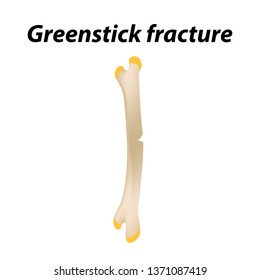Revealing The Science Behind Cold Laser Treatment: Examining Its Devices And Ramifications
Revealing The Science Behind Cold Laser Treatment: Examining Its Devices And Ramifications
Blog Article
Short Article By-Bendix McIntosh
You may have heard of cold laser therapy as an appealing therapy choice for numerous conditions, yet have you ever wondered how it in fact services a cellular level? Understanding the systems behind this treatment can shed light on its effectiveness in advertising healing and decreasing inflammation. By discovering the scientific research behind cold laser treatment, you'll get insights into the remarkable methods which light can affect cellular processes and assist in tissue repair.
How Cold Laser Therapy Functions
To comprehend how cold laser treatment functions, you require to realize the essential concepts of just how light energy engages with organic cells. Cold laser treatment, additionally referred to as low-level laser treatment (LLLT), utilizes particular wavelengths of light to pass through the skin and target underlying cells. Unlike the intense lasers made use of in surgical procedures, cold lasers release low levels of light that do not generate warmth or cause damage to the tissues.
When these mild light waves reach the cells, they're taken in by elements called chromophores, such as cytochrome c oxidase in mitochondria. This absorption sets off a series of organic feedbacks, consisting of raised cellular power production and the launch of nitric oxide, which enhances blood circulation and decreases inflammation.
Furthermore, the light energy can additionally stimulate the manufacturing of adenosine triphosphate (ATP), the power currency of cells, assisting in cellular repair service and regrowth procedures.
In essence, cold laser therapy harnesses the power of light energy to advertise healing and ease discomfort in a non-invasive and gentle fashion.
Mechanisms of Action
Exactly how does cold laser treatment really work to generate its restorative effects on biological cells?
Cold laser therapy, also known as low-level laser treatment (LLLT), operates via a procedure known as photobiomodulation. When infrared wraps is applied to the skin, the light power permeates the cells and is taken in by chromophores within the cells.
These chromophores, such as cytochrome c oxidase in the mitochondria, are after that boosted by the light energy, resulting in a waterfall of organic reactions. One crucial system of action is the improvement of mobile metabolism.
The taken in light power boosts ATP manufacturing in the mitochondria, which is critical for mobile function and repair service. In addition, cold laser therapy helps to decrease swelling by preventing inflammatory conciliators and promoting the release of anti-inflammatory cytokines.
This anti-inflammatory impact contributes to discomfort relief and tissue healing.
Therapeutic Impacts
Understanding the restorative results of cold laser therapy includes acknowledging just how the enhanced cellular metabolism and anti-inflammatory residential properties contribute to its positive results on organic cells.
When the cold laser is related to the damaged area, it boosts the mitochondria within the cells, causing raised manufacturing of adenosine triphosphate (ATP), which is critical for cellular feature and repair work. This boost in cellular energy accelerates the healing process by advertising tissue regrowth and lowering inflammation.
In addition, the anti-inflammatory residential or commercial properties of cold laser treatment help to reduce pain and swelling in the targeted area. By hindering inflammatory conciliators and promoting the launch of anti-inflammatory cytokines, cold laser therapy aids in reducing pain and boosting the general recovery reaction.
This reduction in swelling not just supplies instant alleviation yet likewise sustains lasting cells repair work.
Verdict
Finally, cold laser therapy works by boosting mobile repair and cells regeneration via photobiomodulation. Its anti-inflammatory buildings give pain relief and minimize swelling by preventing inflammatory moderators.
This treatment uses a comprehensive method to healing, supplying both prompt relief and long-term tissue repair benefits.
Via its mechanisms of activity, cold laser therapy verifies to be a reliable and promising treatment choice for a range of problems.
